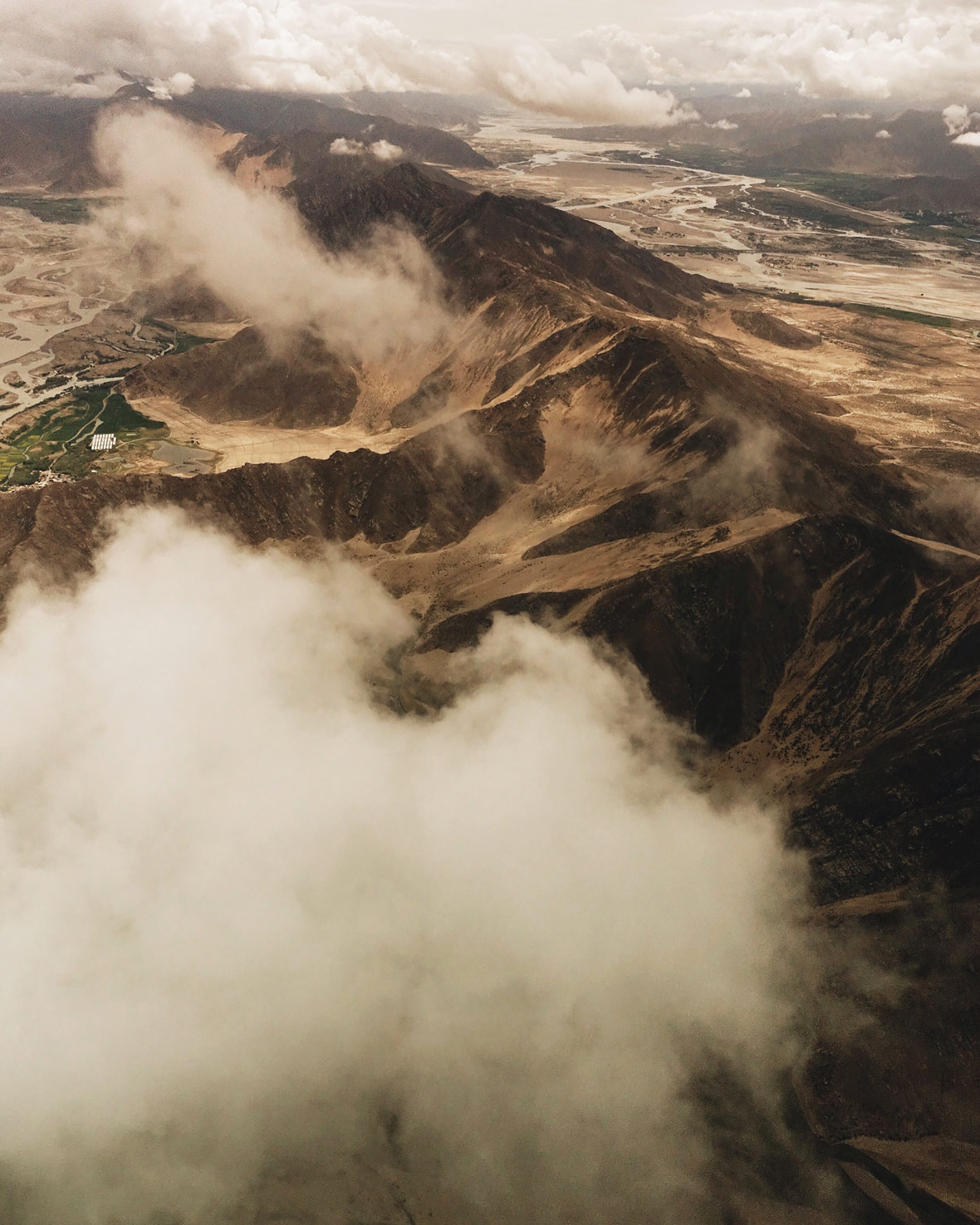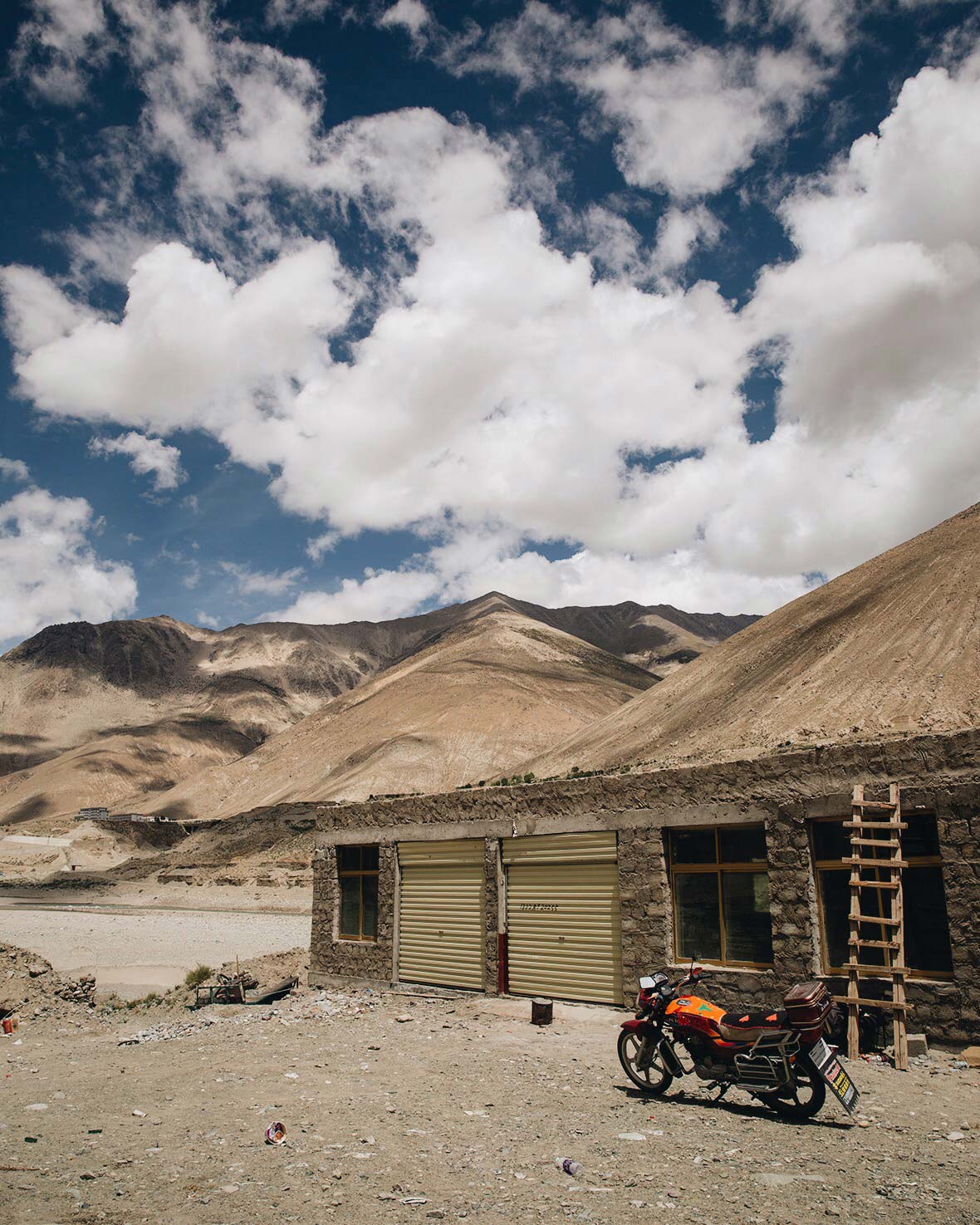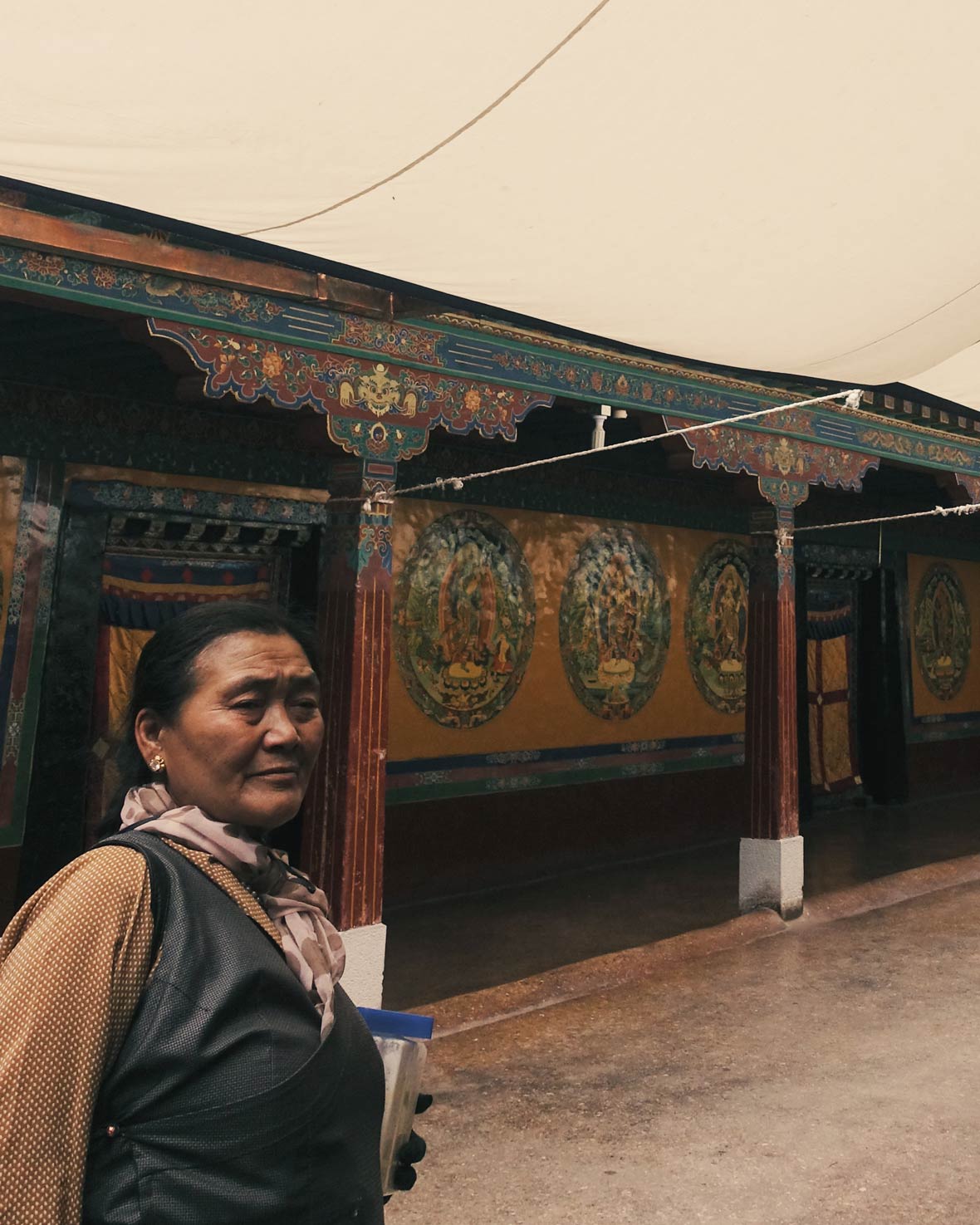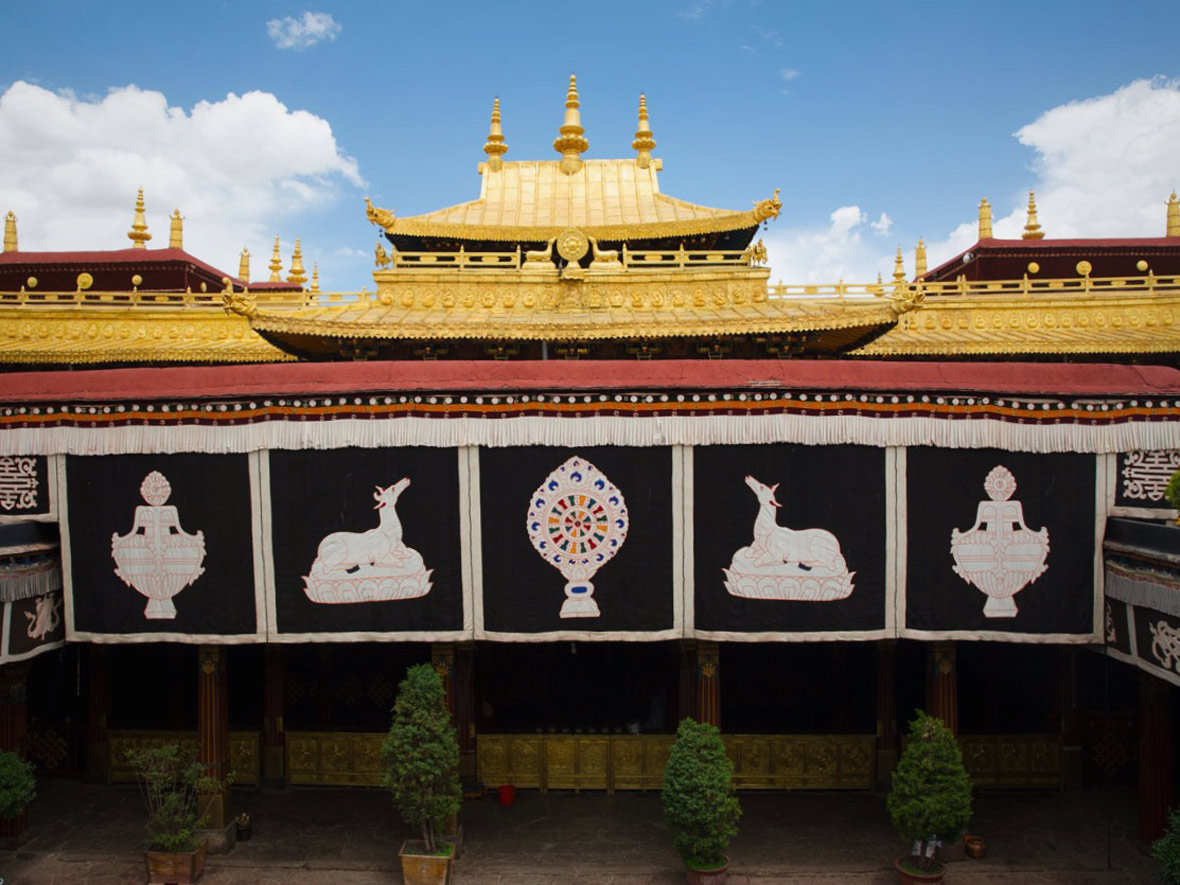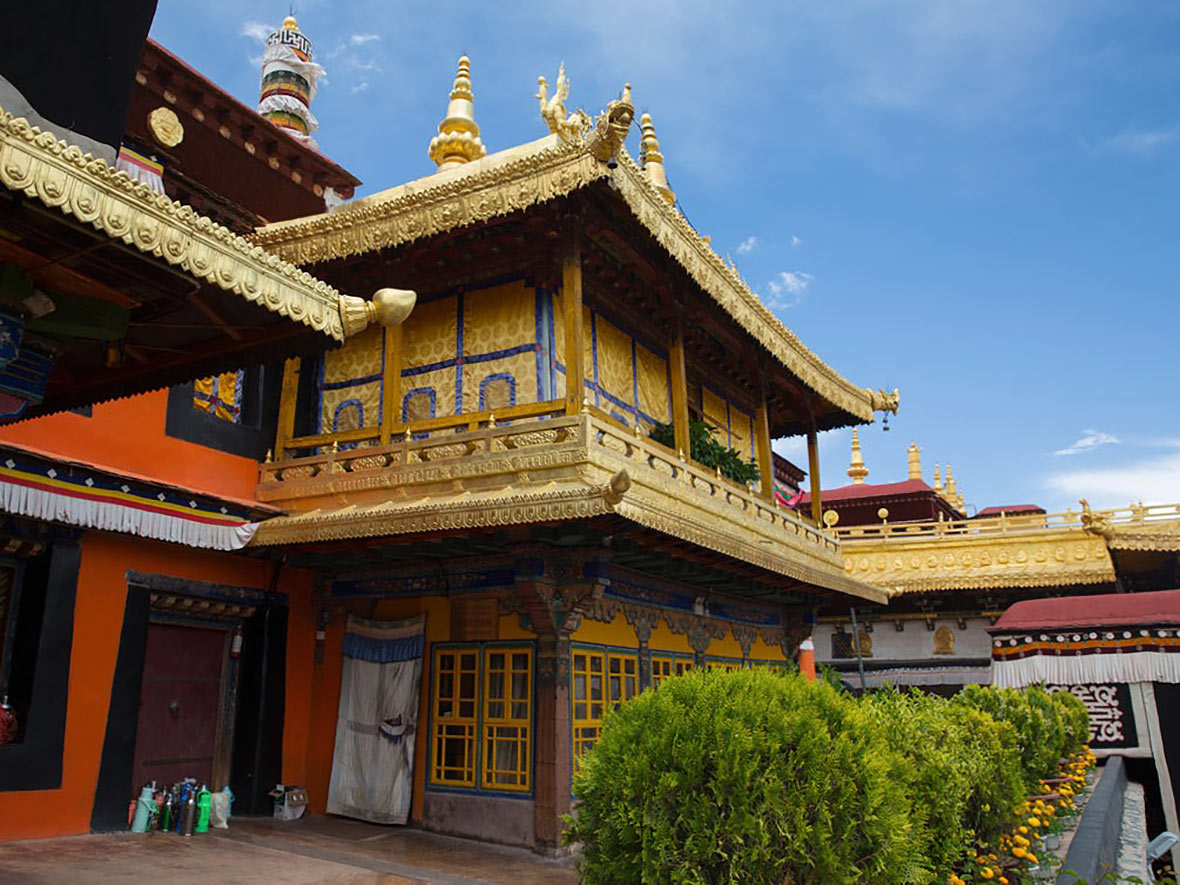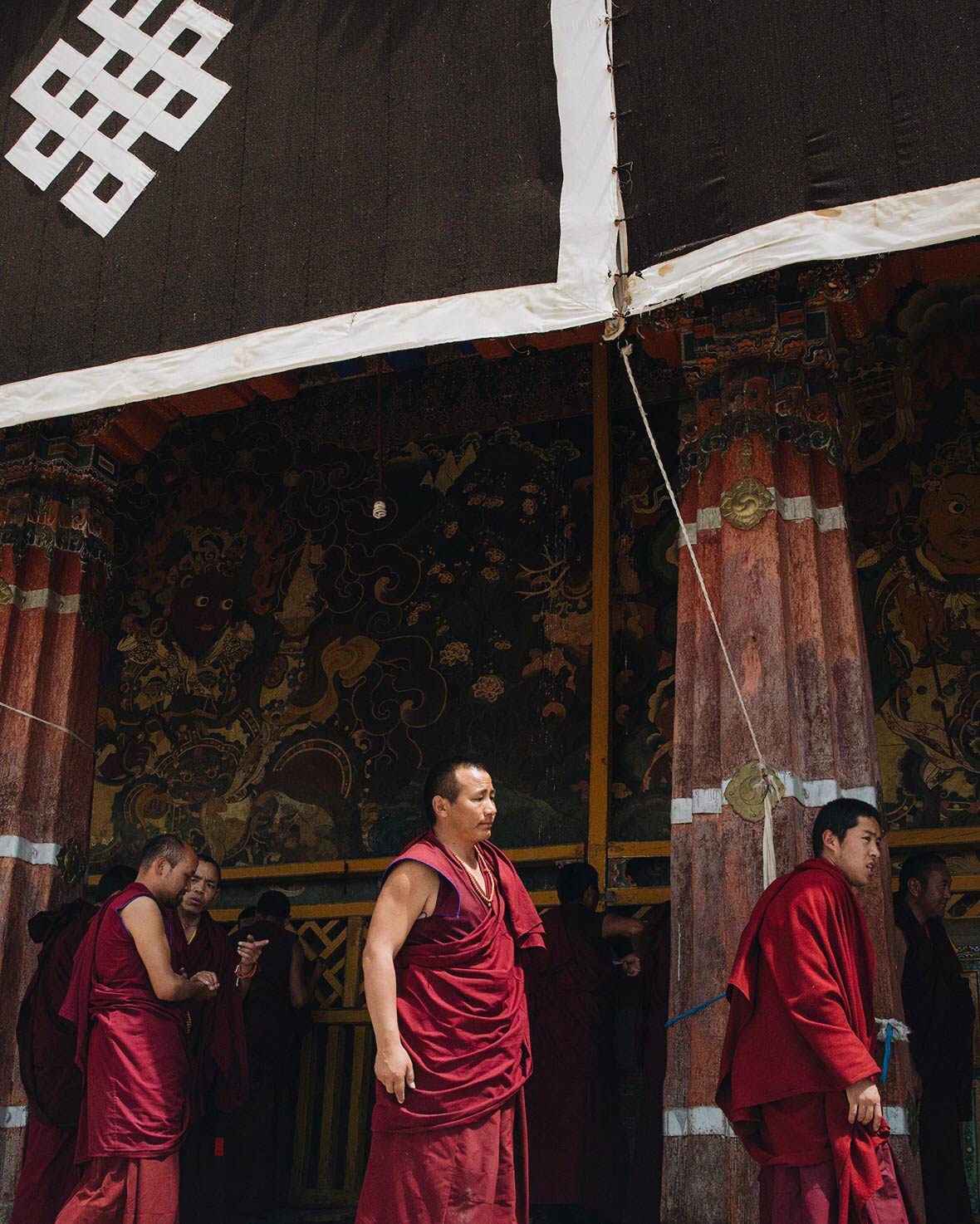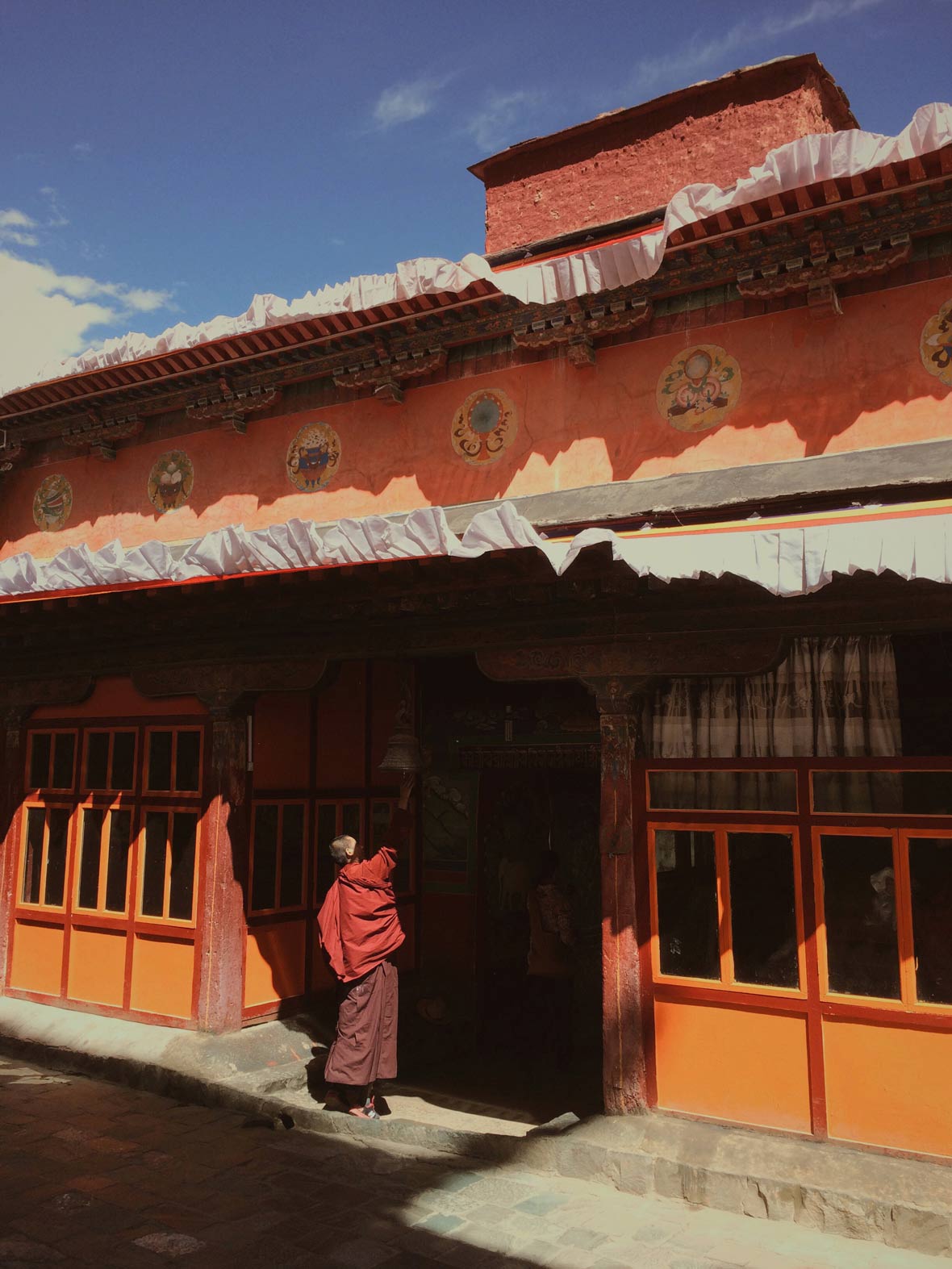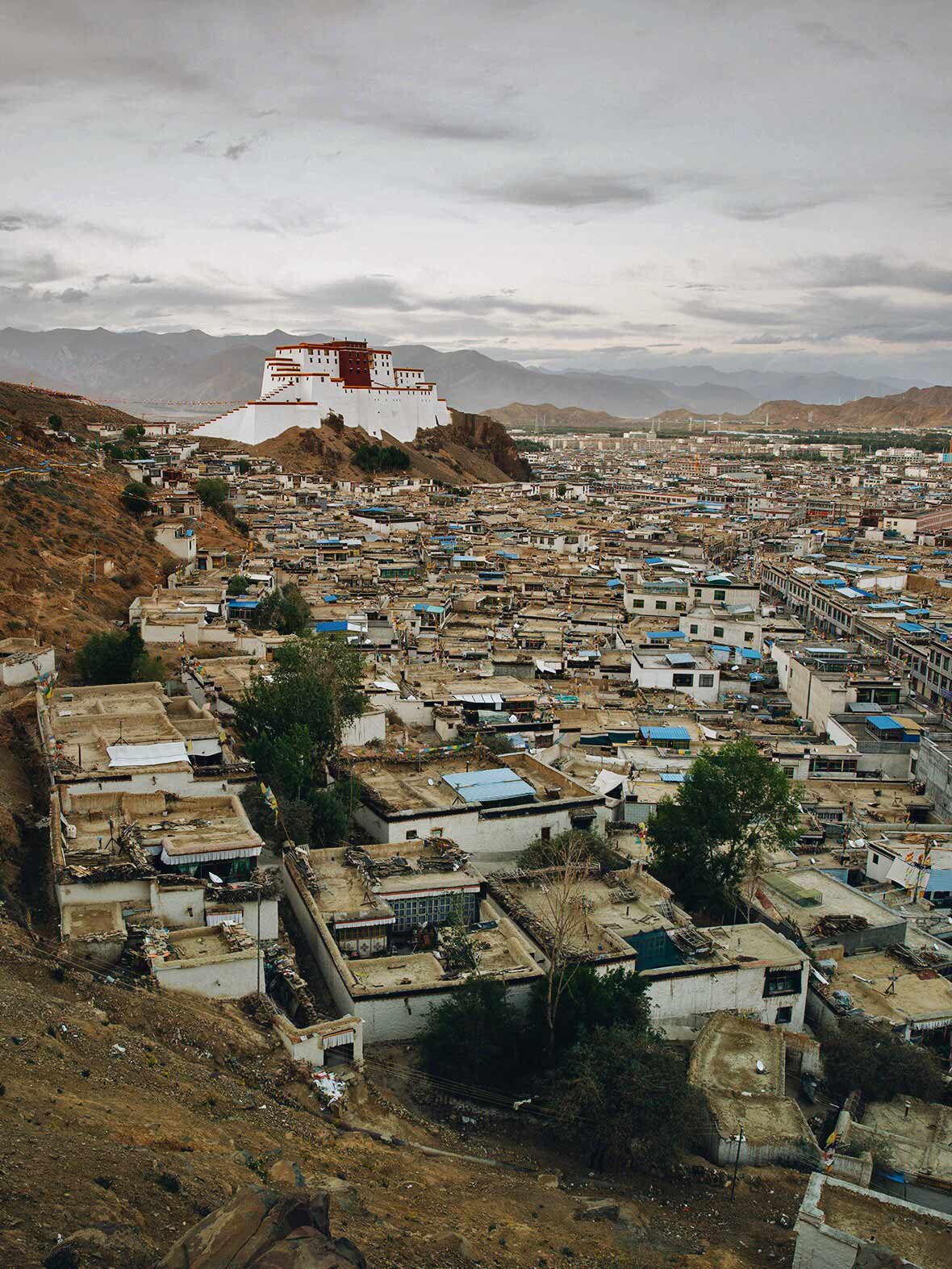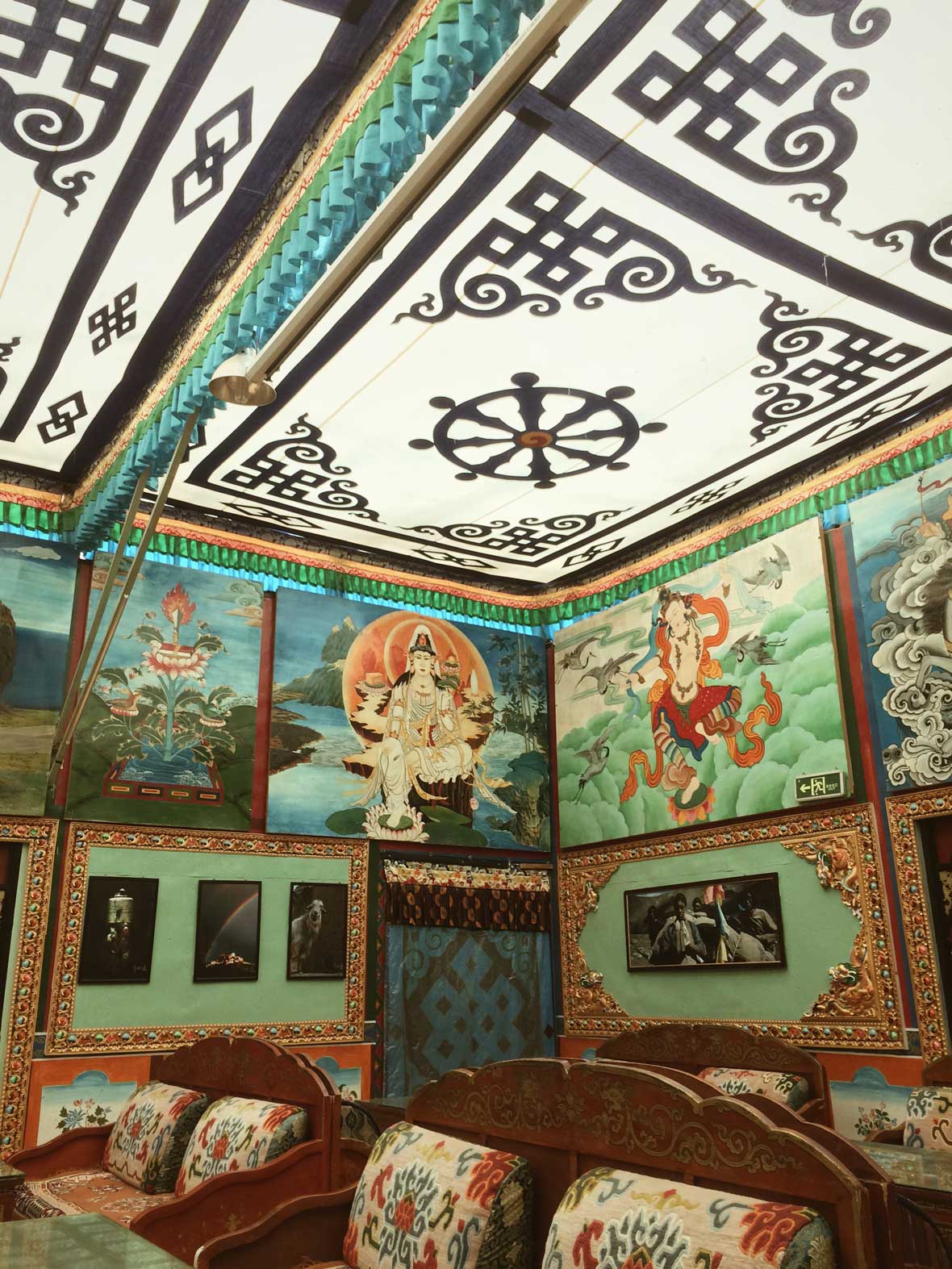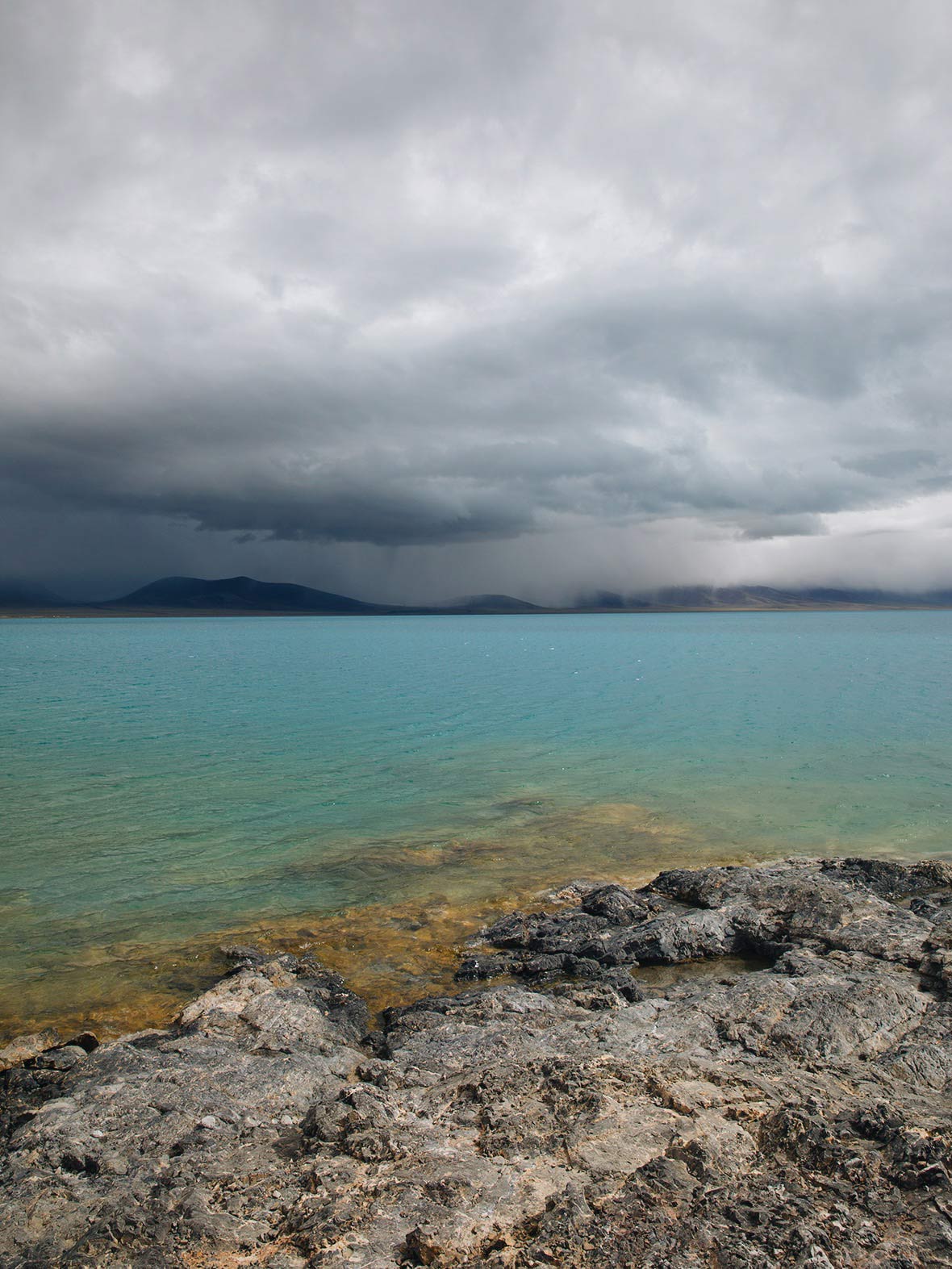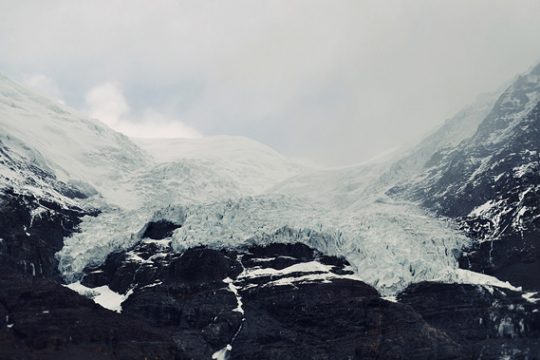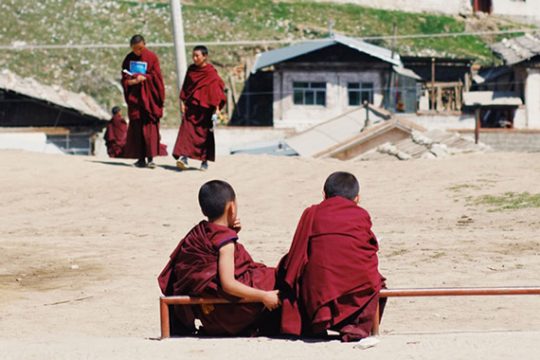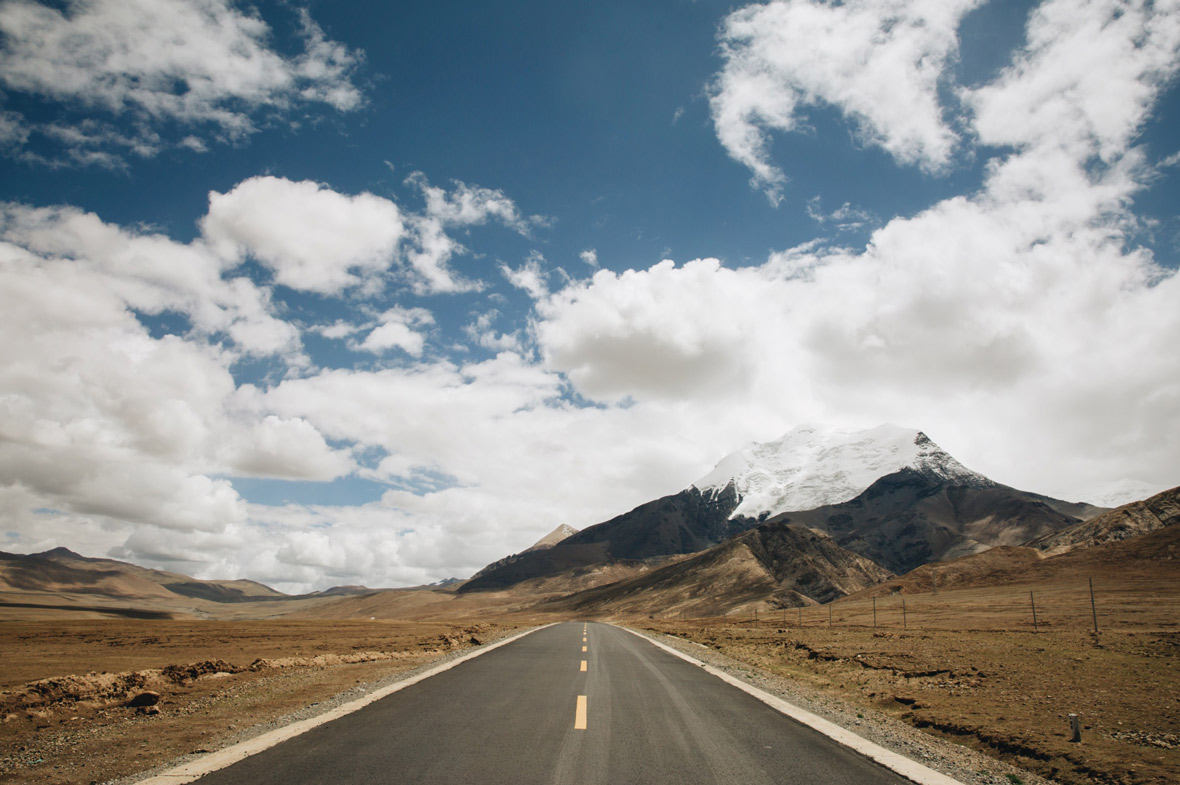
Having lived in mainland China for over six years, I had always wanted to travel to Tibet. For many casual travellers, it is a remote region of the world, both vast and harsh – and in many ways, also not without its own share of obstacles to access. Its allure, while partly from the pure natural beauty of its wild terrain, lies also in the mysterious culture of the nomadic Tibetan people and its folklore; the romance and spirituality of Tibet inspire an irrepressible kind of wanderlust.
身居中国已有六年光景,在这六年里,我从不曾断过前往西藏的念头。对于很多一般的游客而言,西藏都是世界上遥远的一方天地,在很多方面,包括进入藏区本身,都让它都显得既广袤又粗粝。它的无穷魅力,不仅来自它原生纯净大自然的美,也来自游牧藏民的乡土人情,和西藏那让无数旅人神往不已的传奇和灵性。
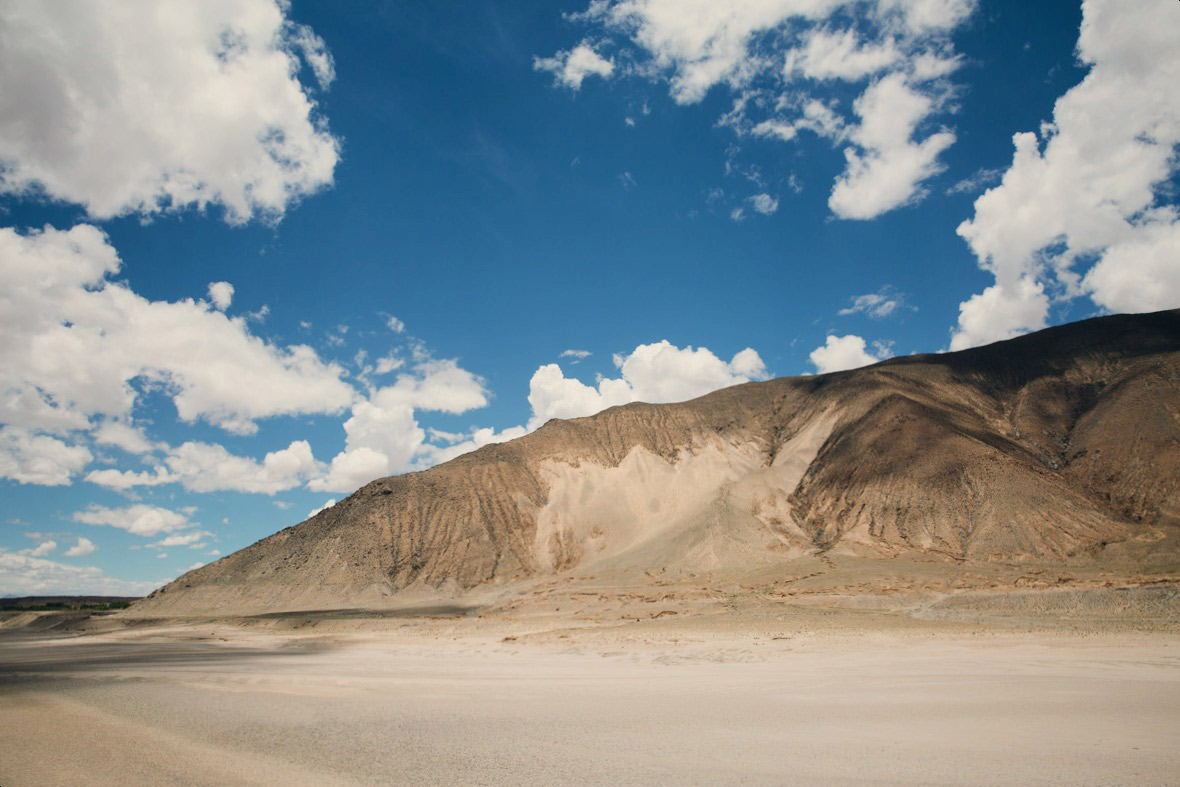
Landing in Lhasa Gonggar Airport, it can easily feel like you have arrived at the top of the world. The approach to the remote airport takes you over miles and miles of spectacular mountains which dramatically reveal themselves through atmospheric layers of clouds. The name Lhasa means “place of the gods” and the city itself is one of the highest in the world. Situated in the center of the Tibetan Plateau, the city has an elevation of approximately 3,600 meters. Even upon landing, the air can feel noticeably thin; it has about 35-40% less oxygen than at sea level, which for many travellers, can contribute to altitude sickness and shortness of breath.
当飞机降落在拉萨贡嘎机场时,常让人有种到达世界之巅的感觉。 要来到这个万里之外的机场,你需要飞过绵亘不断的崇⼭峻岭,这些山在层峦叠嶂的云层中隐现,美不胜收。“拉萨”在藏语里就是指神居住的地方。这个全球海拔最高的城市位于青藏高原中⼼,平均海拔约3600米。飞机落地的那一霎那,就能明显感觉到空气的稀薄。这里的含氧量低于海平面含氧量35%-40%,这也是造成大多数登山者出现高原反应、呼吸急促的原因。
Driving into the city proper, we passed through the Chinese-built quarter; a curious mix of half-finished high-end shopping malls, modern hotels and restaurants, it at first resembles almost any second-tier city in mainland China. But once inside the old Tibetan quarter, a far more interesting and authentic part of the city with its byzantine alleyways and side streets, visitors can still get a sense of some of the medieval markets and street life that used to exist in Lhasa’s old town.
驱车进入市区时,我们经过了一个汉族化城区,那里奇妙地汇聚了许正在建造的高端商场 、现代酒店和餐厅,乍眼看去,和中国大陆很多二线城市并无二致。但当渐渐深入西藏传统老区时,这个城市的另一面便展现了出来:带着拜占庭式的蜿蜒巷道和小街让人们仿佛穿越到了中世纪的市场,感受拉萨古镇曾经的市井百态。
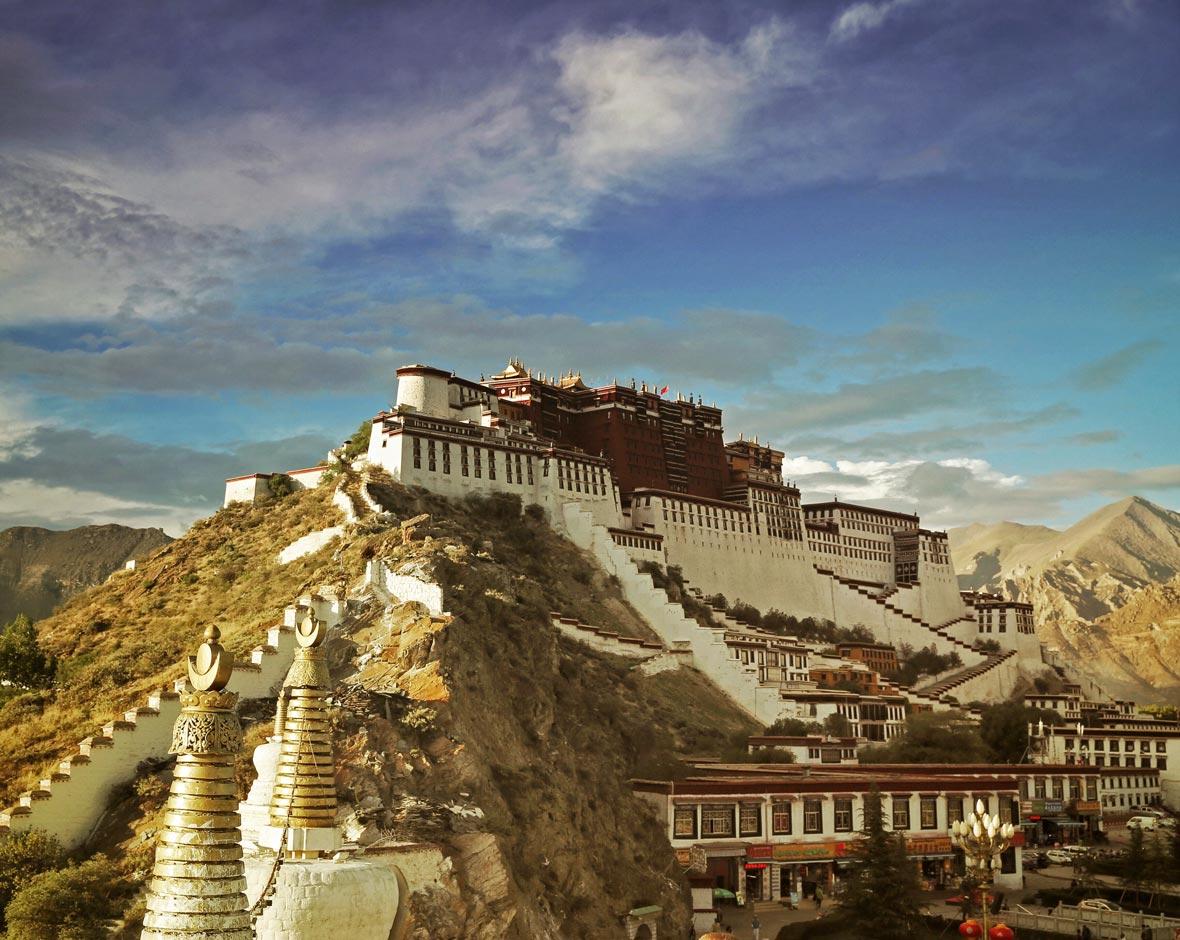
The holiest city in Tibet, Lhasa is known for its ancient monasteries and Buddhist temples. Its most iconic structure is the Potala Palace, the former chief residence of the Dalai Lama in Lhasa, which is famously depicted on the back of the Chinese 50 yuan banknote. Perched impressively like a fortress on a hill, the Potala is the highest ancient palace in the world and is an important symbol of Tibetan culture and history. Buddhist pilgrims, who come from all over Tibet to travel to Lhasa, will come to pay homage to the royal palace by walking clockwise around the entire estate. Pilgrims can often be seen circling the Jokhang Temple in Barkhor Square just nearby, performing a curious repetitive ritual of prostrating themselves on the ground and advancing forward a step. It is not uncommon for some to prostrate all the way from their hometown to Lhasa, a feat which can reportedly take up to two years to achieve. For these devout Tibetans, this tantric ritual of performing these tens of thousands of prostrations serves as a means to overcome one’s pride and achieve nirvana.
作为西藏圣城,拉萨的古代寺院和佛教寺庙举世闻名。其中最具标志性的建筑当属布达拉宫,那曾是拉萨达赖的主要居所,也是中国50元币值人民币背后的图案。布达拉宫依山而建,从外观上看,宛若巨大的堡垒,它是世界上海拔最高的古代宫殿,也是藏族历史和文化的重要标志。整个西藏的佛教教徒都会来拉萨朝圣,为了致敬圣殿,朝圣者会环绕着布达拉宫的四周顺时针行走。在八廓街附近的大昭寺还能常常看到有的朝圣者进行磕拜仪式,磕拜时五体投地,而后向前一步,继续认真地重复着这一仪式。还有一些朝圣者以这样的磕拜仪式一路从家乡来到拉萨,这样盛大的朝圣之行据说会花上两年时间。但对于虔诚的藏民们来说,这个需要无数三步一磕,艰难匍匐而行的密宗仪式,能够攻克人的骄傲之心,最后达到涅槃境界。
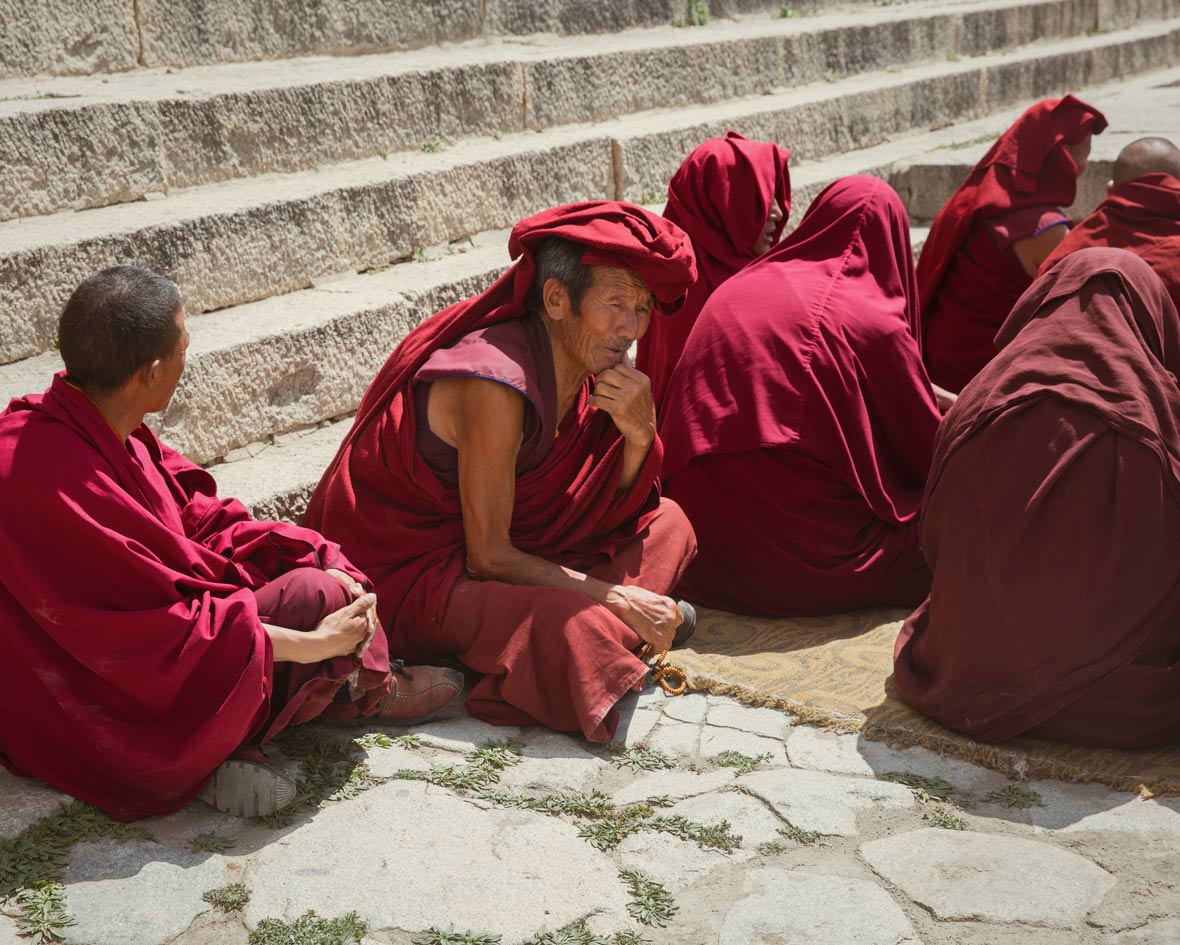
Lhasa is often referred to by the locals as the “sunlit city”. On the day we visited Sera Monastery, on the northern outskirts of the city, the complex was bathed in abundant, warm sunlight. A place of learning for Tibetan monks, the monastery is known as one of the best locations in Tibet to observe outdoor debating sessions of Buddhist doctrines among the monks. Set in the “debating courtyard” outside the main assembly hall, the sessions are based on lively philosophical exchanges between questioners and defenders. The defenders, usually junior monks, are seated, while the questioners test their knowledge of Buddhist scripture. The questions posed are often punctuated by dramatic hand slapping gestures, a prompt for the seated monk to respond. Sera Monastery, along with Drepung Monastery, which we also visited on the same day, are among the important “great three” university monasteries for Tibetan Buddhism.
拉萨常被当地人作为“日光城”。在我们参观位于拉萨北部郊区色拉寺的那天,整个环境沐浴在充沛温暖的阳光之中。寺院是西藏僧侣学习修行的地方,也是聆听僧侣们在户外辩论佛教教义的最佳场所之一。僧侣们在主寺外的“辩经场”上进行辩经,也可视为是一场主要由诘问者和应对者之间的哲学交流。应对者多为得道高僧,席地而坐,面对诘问者关于佛教教义的挑战。问题通常伴随着夸张的拍手动作而提出,等待着静坐的高僧回答。色拉寺,以及我们在同一天参观的哲蚌寺,都属于藏传佛教最重要的三大寺院之列。
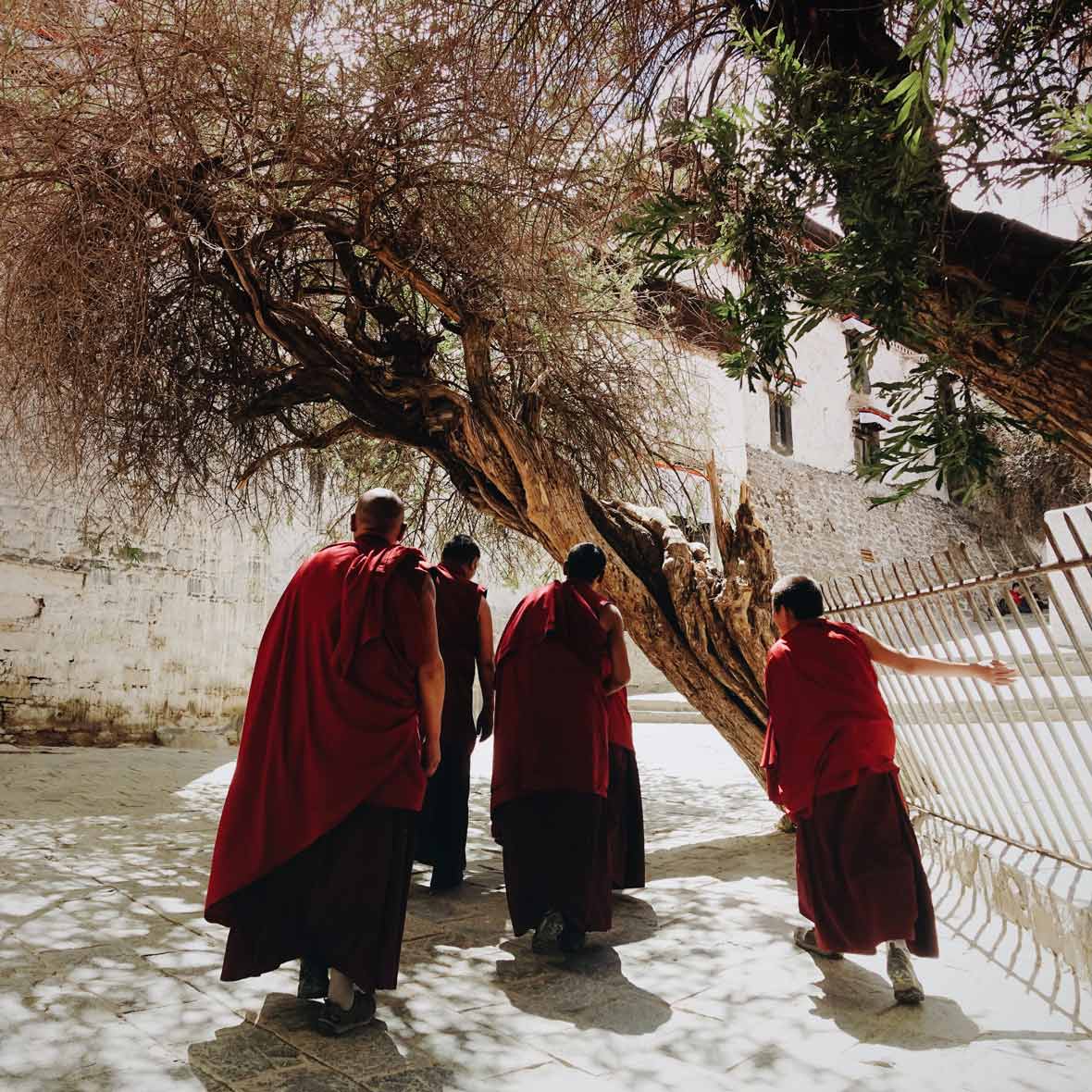
The following morning, we prepare to head out to Shigatse, a five hour drive from Lhasa. Shigatse is the second largest city in Tibet – but with a population of only 12,000, it is actually quite small by Chinese standards. It is home to the beautiful Tashilhunpo Monastery, the traditional seat of the Danchen Lamas. Behind the monastery is a hill lined with rows of Tibetan prayer wheels and small shrines, leading upwards to a stunning view of the Shigatse Dzong. Resembling a smaller prototype of the Potala in Lhasa, the original structure of Shigatse Dzong was completely destroyed during the Cultural Revolution, and later reconstructed in 2005. After a short stay in Shigatse, we continued on to Everest the next day.
第二天一早,我们准备前往离拉萨五小时车程的日喀则。日喀则是西藏的第二大城市,但只有1.2万的人口,想想中国庞大的人口基数,这个城市的人口数量实在是太少。历世班禅大师驻锡之所——美如画的扎什布伦寺就在日喀则。寺院背靠高山,山上一排排西藏转经筒和小佛龛,将视线拉延伸至日喀则宗堡的迷人风光。日喀则宗堡又称为“小布达拉宫”,但其原建筑在文化大革命中毁于一旦,2005年才得以重建。在日喀则短暂停留后,我们第二天就前往珠穆朗玛峰。
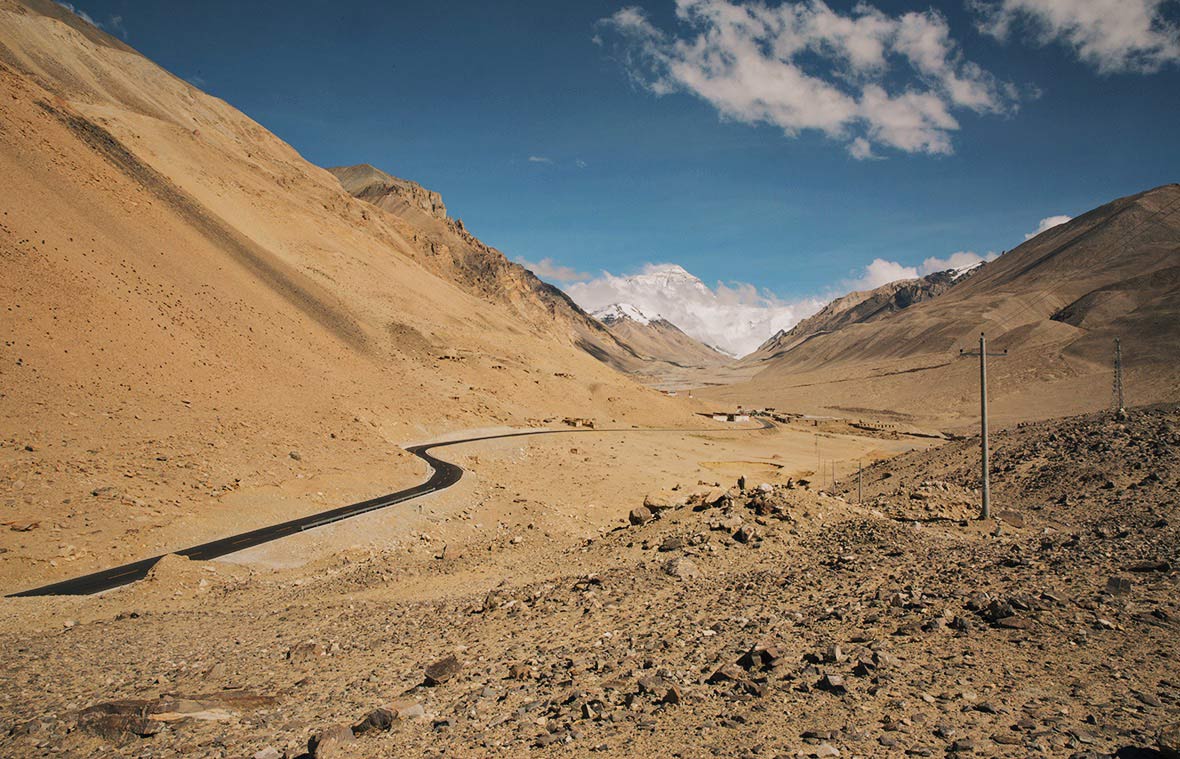
The journey to Everest Base Camp was a time-consuming and tiring one. From the city of Shigatse, it is an additional eight hours by car, often happening on long and winding roads at increasingly higher altitudes, and with frequent checkpoints. The journey for us passed by quickly as there was no shortage of distractions along the way: yaks and sheep grazing in a largely uninhabited Tibetan plateau, dramatic vistas of mountains and slopes, serene lakes and reservoirs – even a few glaciers, and finally as we neared our final destination, snow-capped peaks. When Everest first reveals itself to us, it is truly a breathtaking sight: a lone snow-capped peak far off in the distance, shrouded in mist.
前往珠峰大本营的行程真是耗时又耗体。从日喀则出发,需要开八小时的车,并且路途大多既长又曲折,海拔还相当高,并频繁遇到检查站。不过沿途别致的风情到让我们觉得时间过得挺快的:牦牛和绵羊在大片大片的西藏高原无人区悠闲啃草,巍峨高山、陡峭峻岭、宁静湖泊和广阔水库拼接而成的壮丽景观,还有几处的冰川之美……而当我们最终接近目的地的时候,白雪皑皑的山峰印入眼帘,珠穆朗玛峰就这样出现在我们身前,雪峰独立自傲,直入云霄,雾霭环绕,美得动人心弦。
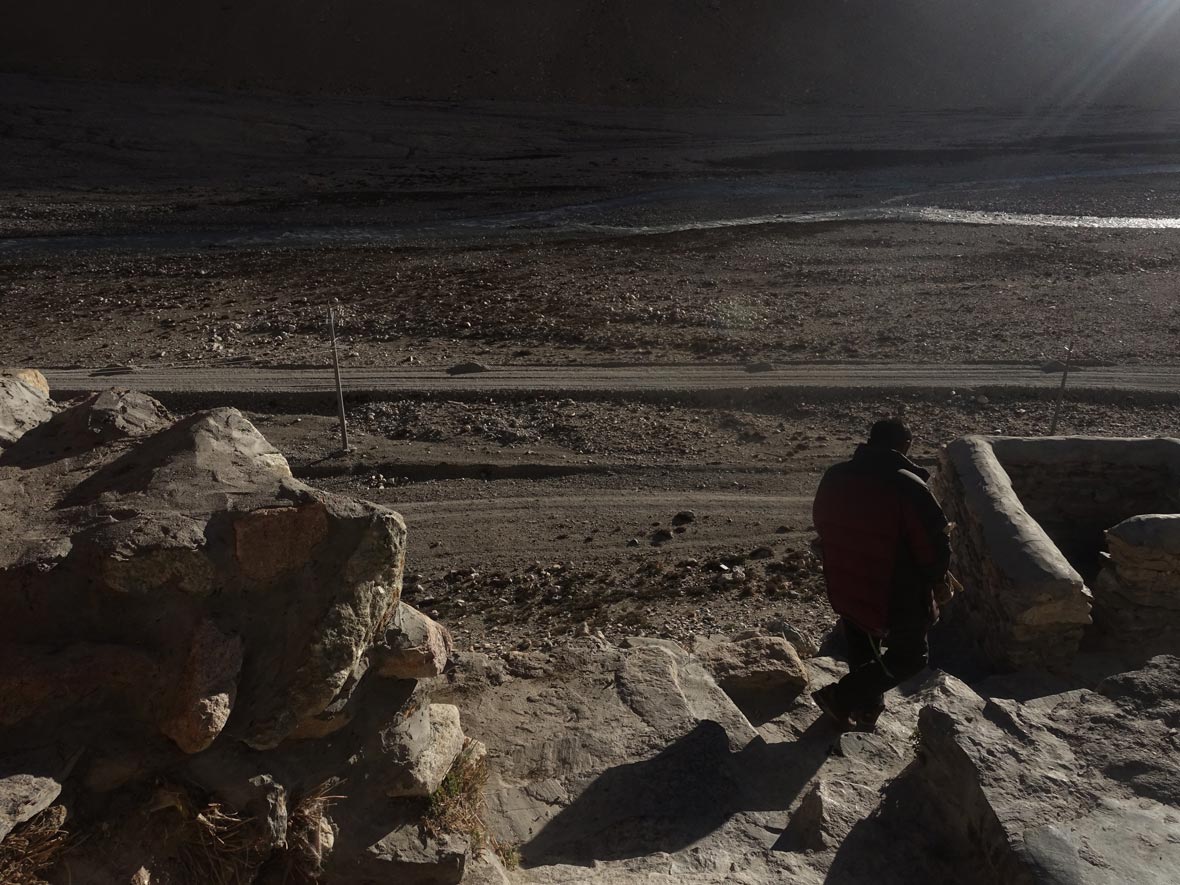
5,150 meters above sea level, Everest Base Camp is a rudimentary campsite used by mountain climbers ascending and descending Mount Everest. Just a short hike away is the lesser known Rongbuk Monastery, which is claimed to be the highest monastery in the world. Though much of its original structure was destroyed during the Cultural Revolution, a lot of it was later restored. Rongbuk’s small, underground and cave-like shrine is a marvel, and the monastery’s view of the north side of Mount Everest is worth a visit in itself.
珠峰大本营位于海拔5150米上,装备简陋,供珠峰登山者和下山者临时使用。离这里不远就是鲜为人知的绒布寺,号称世界上海拔最高的寺庙。虽然寺庙诸多原始建筑在文革中遭到毁坏,但多数在后来的年间又得以修复。 绒布寺里位于下层,宛若洞穴的小神殿就像高山里的奇迹,光是从这里眺望珠峰北侧的壮 美之景,就足以吸引人来此一探。
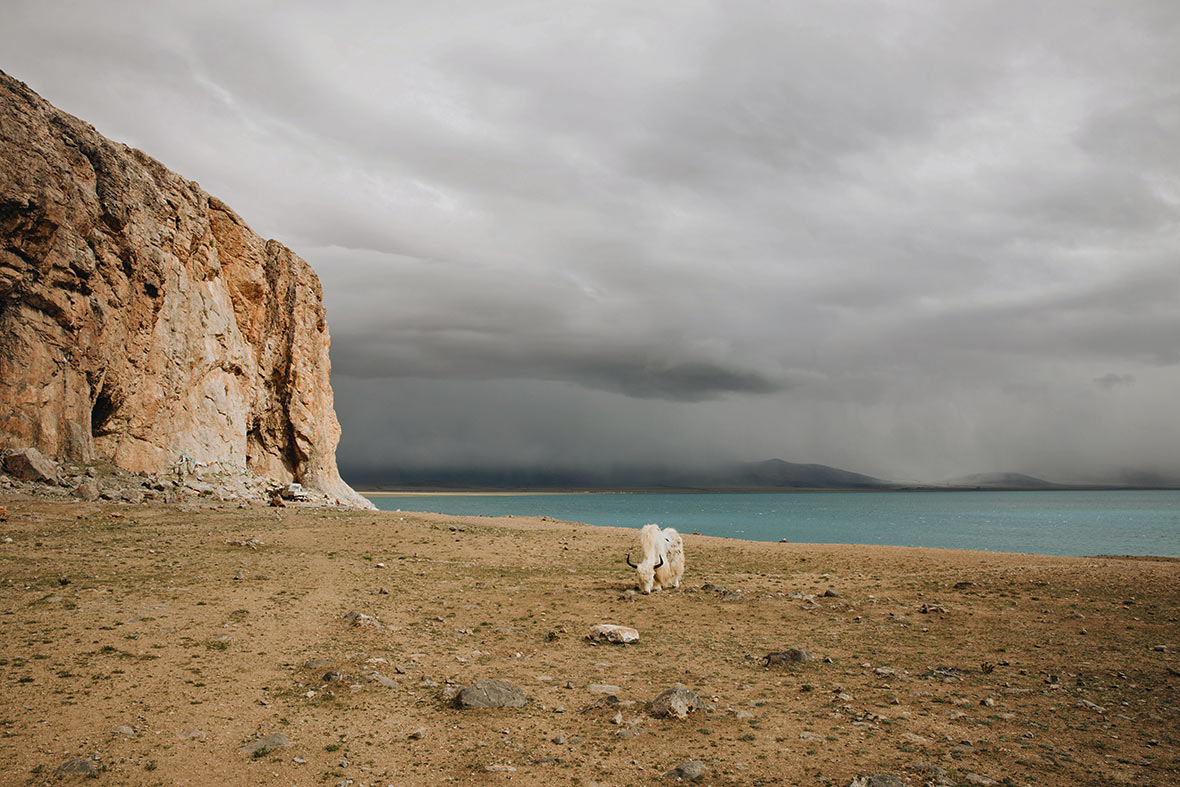
After a night at Everest Base Camp and a short return to Shigatse, we set out for Namtso, also called Lake Nam, which is considered a holy lake in Tibet. There are five islands in the lake which pilgrims used to make spiritual pilgrimages to by walking over the frozen lake in the winter. They would then spend the year there until the following winter when the lake would freeze again. The weather famously changes rather quickly at Namtso; there was even a small threat of a snowstorm from the other side of the lake on the day we were there. After a day of exploring, we stayed overnight at the Namtso Holy Lake Guest House, a modest but fairly comfortable place with charming wall-to-wall Tibetan decorations, before setting out again for Lhasa.
在珠峰大本营过了一夜之后,我们便折回日喀则,准备前往纳木错。纳木错也叫“天湖”,是西藏圣湖之一。湖中有五个岛屿,朝圣者过去曾在这里冬天冰冻的湖面上前行,进行着他们的朝圣仪式。随后,他们会在这里呆上一整年时间,待到第二年冬天湖面再次冻结。纳木错的天气是出了名的变幻莫测,在我们停留期间,湖侧一座雪山下了一场暴雪,所幸有惊无险。一日的风尘仆仆之后,我们在纳木错神湖宾馆过夜歇脚,这个地方的墙上尽是藏族装饰,虽简陋却也相当舒适。翌日,我们便启程重返拉萨。
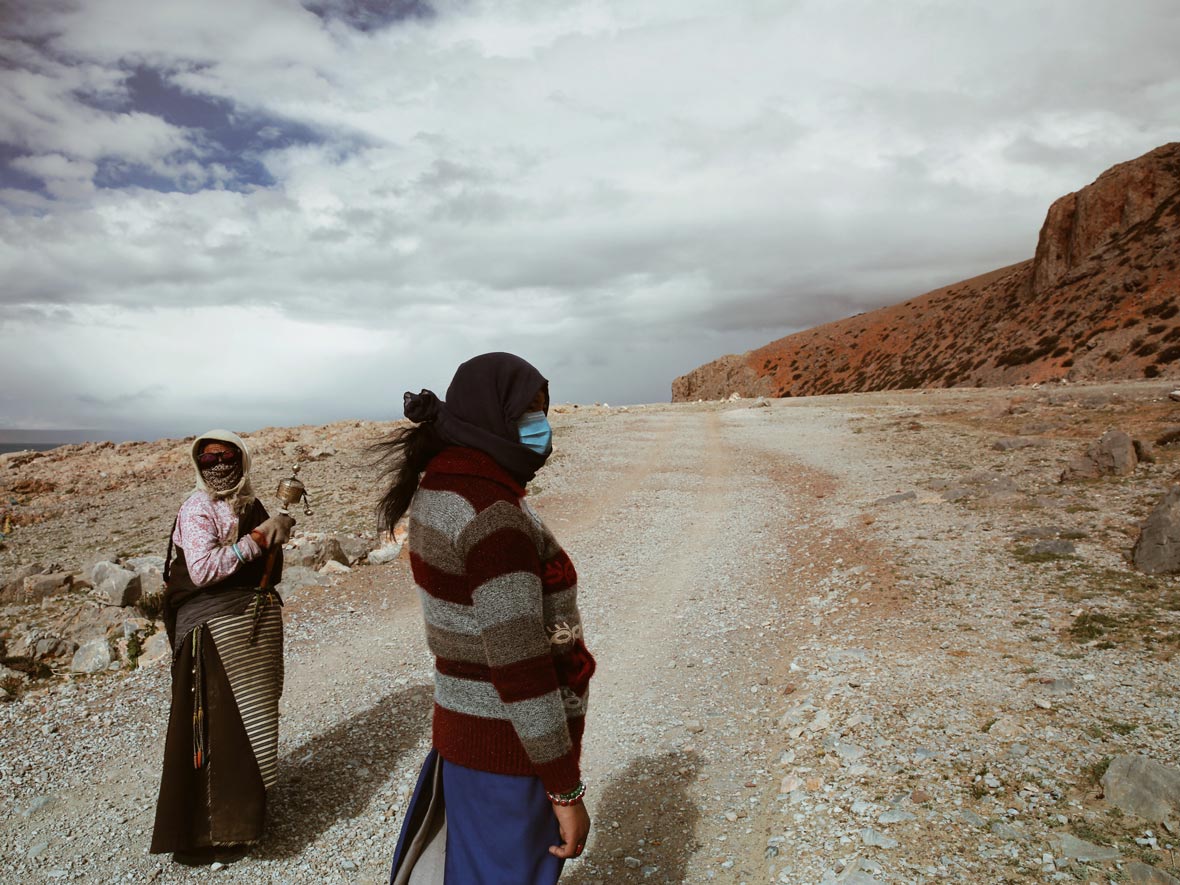
Our last couple days in Lhasa marked the beginning of the rainy season, when there is typically heavy rainfall almost every night in Tibet. Leaving Lhasa in the middle of a downpour, at that precise moment, felt like a very fitting ending to an unforgettable adventure. After a long day of transfers and on arriving back in Shanghai, it took another week just to decompress and digest all the experiences from the trip. I was home, but still completely mystified by the mysterious ways of the Tibetans.
我们在拉萨的最后几日即是西藏雨季的开始,这个时节的西藏几乎夜夜滂沱。离开拉萨时的倾盆大雨,在那一刻,却也让人觉得,是这场奇遇的一个完美句号。在几经辗转了一天后回到了上海,而接下来的一周都让人反复回味着这整个旅程。人已在家中,却仍沉浸于在藏族的神秘中不能自拔。

